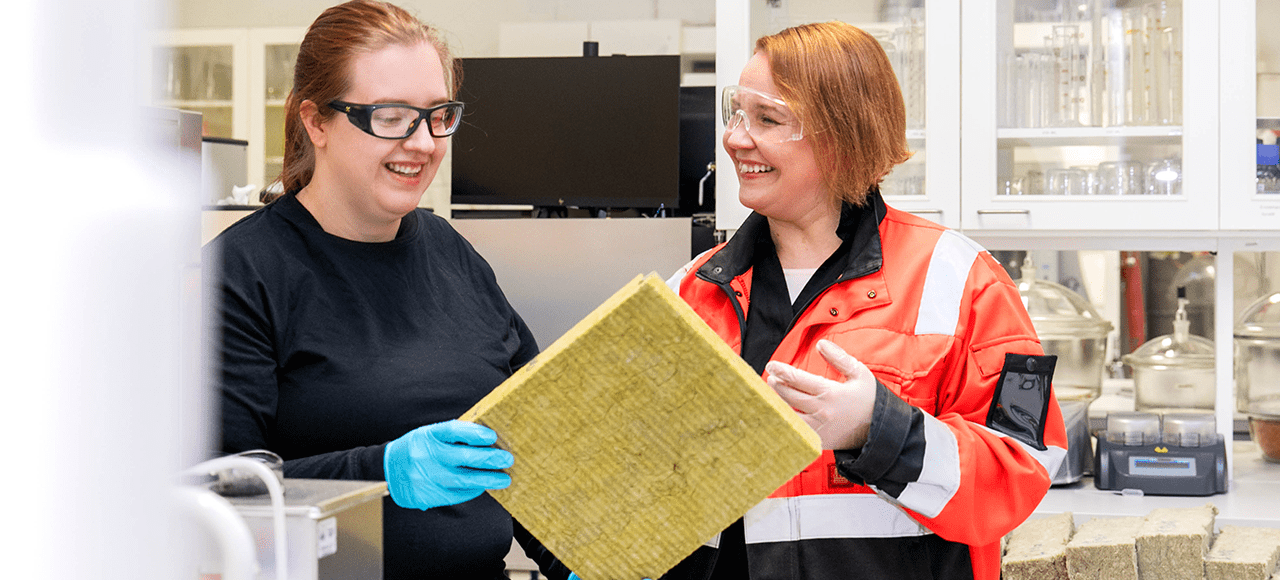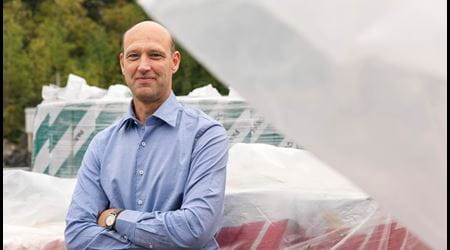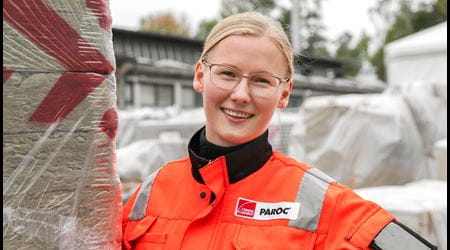
15/12/2023
Innovations are not born from nothing – and certainly not alone. Leader of the R&D team at OC Paroc Susanne Fagerlund and her colleagues explain what continuous and successful product development requires.
A set of three text boards hangs on the walls in several rooms at Owens Corning Paroc’s offices in Parainen, Finland.
The first board immediately makes it clear why we are here: Our mission – To build a sustainable future through material innovation.
“Those are the words we live by every day,” says Susanne Fagerlund, Global Mineral Wool R&D Leader at Owens Corning Paroc.
Susanne leads a Research & Development department of 26 professionals at OC Paroc’s Center of Excellence located in Parainen, Finland, and Trzemeszno, Poland.
The department focuses on the continuous product and process development of stone wool. It is looking for ways to reduce the carbon footprint of the products, recycle and reuse waste, reduce packaging materials and fulfill customers’ wishes and the needs of the planet even better.
Now, Fagerlund and her team have promised to tell us how innovations are born.
Development always starts with either an idea or a goal. It is also important to envision future needs.
“Ideas rarely come out fully formed. Innovations are born through iteration: thoughts are tossed back and forth and challenged constantly by different groups,” says Susanne Fagerlund.
“R&D does nothing on its own. Our development community consists of a large group of people from different business units.”
Paroc is part of the American company Owens Corning, which means that the development efforts are global.
“It's inspiring to be able to work with the best ideas from business units around the world, such as the United States, Belgium, France, China, Sweden and Poland,” says Fagerlund.

He now provides consultation for several research and development projects and finds global cooperation rewarding. His network of experts has grown even larger.
“I work weekly with colleagues from, say, Granville in Ohio, where Owens Corning has a development center.”
There are numerous research and development projects in progress at all times and a team is put together for each of them on a case-by-case basis.
Both Fagerlund and Lindberg believe that the best team is diverse: people of different ages, representing different backgrounds and cultures.
“There are people who run fast and then there are those who want to put on the brakes and question things. We need both,” says Lindberg, who thinks he has become a bit of a decelerator with age and experience.

Some R&D projects last only a few months, such as the process development of PAROC® Natura Lana, whereas others last for years or even decades. The long-term development of electric melting technology began in Parainen in 1986 and still continues to this day.
“Innovations require perseverance. You need at least a hundred stumbles for every project that makes it across the finish line,” says Susanne Fagerlund.
Even though projects are constantly rejected or scaled down or changed along the way, Fagerlund does not call them failures. They are lessons learned. Learning from your mistakes is an essential part of product development, part of a bigger purpose.
The third board reads: Our purpose – Our people and products make the world a better place.
“This is easy to agree with,” says Susanne Fagerlund.
“I often think about this, because I have a 7-year-old daughter and I want to leave a better world for her.”